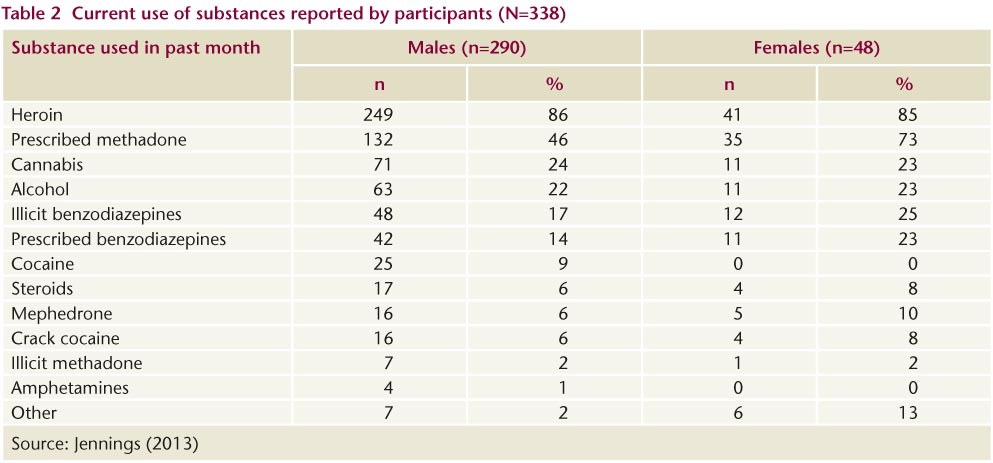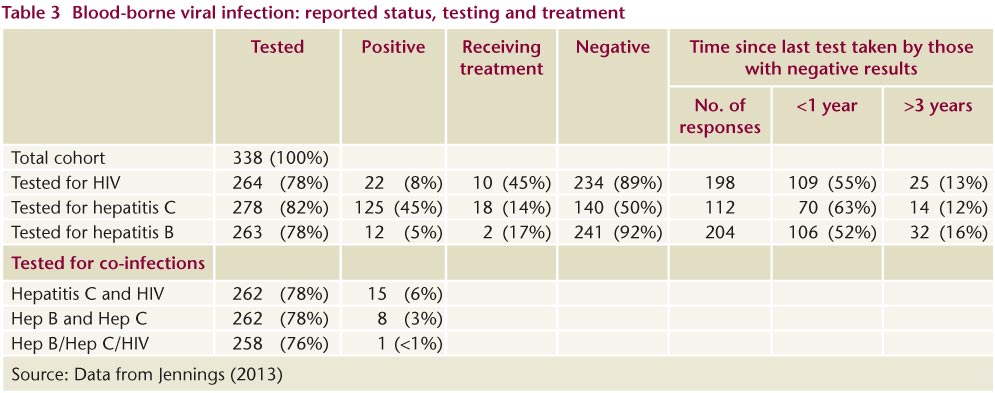Keane, Martin (2013) Profile of attendees at MQI health promotion unit. Drugnet Ireland, Issue 47, Autumn 2013, pp. 30-31.
| Preview | Title | Contact |
|---|---|---|
|
PDF (Drugnet Ireland 47)
- Published Version
1MB |
Merchants Quay Ireland (MQI) has published the profile of a cohort of people attending its Health Promotion Unit (HPU) needle exchange.1 The main objective of the HPU is to minimise the risks associated with injecting substances by providing sterile injecting equipment and information and instruction on safe injecting techniques. Data were collected from 338 attendees using an instrument developed specifically to meet the information needs of the HPU in MQI and included items from internationally validated survey instruments and items fashioned specifically for the present study. Staff in the HPU collected data on socio-demographic characteristics, substance use, injecting risk behaviour and blood-borne virus (BBV) status and treatment. This article presents some of the key findings in the report under the four domains of enquiry.

Substance use
Seventy-five per cent reported using two or more substances in the last month (current use). Thirty per cent (102) reported using two substances in the past month, the most frequent combination being heroin and methadone, used by 49 (48%) of the sub-sample. Almost 9 out of 10 users of prescribed methadone reported using heroin. Heroin users who did not report using methadone were reported to consume higher average amounts of heroin per day, to spend more money on heroin per day and to use heroin on the greatest number of days in the past month.

Injecting risk behaviour
Table 3 gives the profile of the cohort in terms of blood-borne viral infection status, testing and treatment, as reported by the participants. Among those who tested positive for HIV (22), hepatitis C (125) and hepatitis B (12), uptake of treatment was poor, being as low as 14% in the case of hepatitis C. Of those who tested negative for any BBV, and who responded to the question, more than half had been tested within the past year.While reported co-infections for hepatitis B and C (3%) and HIV and hepatitis C (6%) were low, 73% of those who were HIV positive were also hepatitis C positive.

The research group involved in this study make recommendations in three main areas:
J Health care, prevention, harm reduction and treatment > Health related issues > Health information and education > Health promotion
J Health care, prevention, harm reduction and treatment > Health care programme, service or facility > Substance disorder treatment unit
VA Geographic area > Europe > Ireland > Dublin
Repository Staff Only: item control page